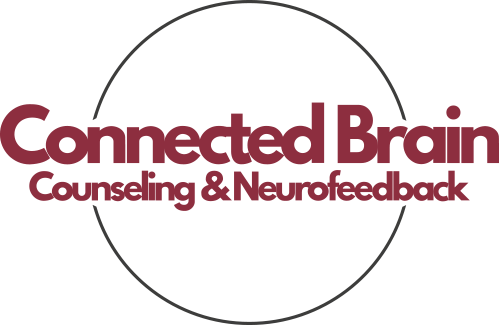What is Attachment Theory?
Attachment theory, originally developed by John Bowlby, suggests that the bonds we form with our caregivers in early life significantly shape how we relate to others as adults. Secure attachments provide a foundation for healthy emotional development, while insecure or disrupted attachments can lead to long-term emotional challenges. Individuals with attachment trauma often struggle with trust, intimacy, and emotional regulation in their adult relationships. This is where Attachment-Focused EMDR can offer support.
How Does EMDR Work?
EMDR therapy is a structured process that helps individuals reprocess traumatic memories and experiences. It involves eight phases, including history-taking, preparation, and the use of bilateral stimulation (such as eye movements or tapping) to help the brain process and integrate traumatic memories in a healthier way. The goal of EMDR is to reduce the emotional intensity of traumatic memories, allowing individuals to move forward without being overwhelmed by the past.
In the context of Attachment-Focused EMDR, therapists pay special attention to early attachment experiences and how they impact present-day behaviors and relationships. By addressing both the trauma and attachment wounds, this therapy aims to create lasting emotional healing.
Who Can Benefit from Attachement-Focused EMDR?
Attachment-Focused EMDR is particularly effective for individuals who have experienced relational trauma, such as neglect, abandonment, or emotional abuse. It can also benefit people who struggle with:
- Chronic anxiety or depression related to attachment wounds.
- Difficulty forming and maintaining healthy relationships.
- Trust issues or fear of intimacy.
- Emotional dysregulation or difficulty managing emotions.
- Patterns of attachment styles, such as anxious or avoidant attachment.
This therapy is especially useful for those who find that their early attachment experiences continue to influence their adult relationships, often leading to recurring emotional pain or dysfunctional relationship patterns.
The Process of Attachment-Focused EMDR
The process of Attachment-Focused EMDR typically begins with a thorough exploration of the client’s attachment history. This includes understanding the individual’s early relationships with caregivers and identifying any attachment disruptions or traumas. Once these areas are identified, the therapist will guide the individual through the standard EMDR protocol, while incorporating specific techniques to address attachment-related issues.
Bilateral stimulation is used during sessions to help reprocess painful memories and rewire the brain’s emotional responses. Over time, individuals become less reactive to triggers that remind them of past attachment wounds, and they develop healthier ways of relating to others.
Benefits of Attachment-Focused EMDR
- Healing Early Attachment Wounds: One of the primary benefits of Attachment-Focused EMDR is the ability to heal deep emotional scars left by early attachment disruptions. By working through these traumas, individuals can form healthier, more secure attachments in their adult lives.
- Improved Relationships: As attachment wounds heal, individuals often find that their relationships improve. They may become more trusting, emotionally available, and capable of forming deeper connections with others.
- Emotional Regulation: Attachment-Focused EMDR helps individuals gain better control over their emotions. By processing and reprocessing painful memories, they become less prone to emotional outbursts or shutdowns when faced with relational challenges.
- Breaking Negative Patterns: This therapy can help individuals break free from unhealthy relationship patterns rooted in attachment trauma. Whether it’s fear of intimacy or a tendency to push others away, Attachment-Focused EMDR offers tools to create healthier relational dynamics.
Why Attachment-Focused EMDR is Different
While traditional EMDR focuses primarily on reprocessing trauma, Attachment-Focused EMDR adds a layer of relational healing. It not only targets traumatic memories but also addresses the emotional and relational consequences of early attachment disruptions. This dual focus makes it a powerful tool for individuals whose trauma is tied to their early relationships.
Another key distinction is the emphasis on safety and trust within the therapeutic relationship. Attachment-Focused EMDR therapists work to create a secure therapeutic environment where individuals feel safe to explore their attachment wounds. This sense of safety is critical for successful therapy outcomes, as it mirrors the secure attachments that individuals may not have experienced in early life.
EMDR International Association – Attachment-Focused EMDR Therapy
This article provides an overview of how Attachment-Focused EMDR integrates attachment theory with traditional EMDR, offering insights into how it helps heal relational trauma.
Psychotherapy Networker – Healing Relational Trauma with Attachment-Focused EMDR
This piece explores the application of Attachment-Focused EMDR in therapy, discussing its effectiveness in treating relational trauma and improving emotional regulation.
Verywell Mind – Understanding Attachment Theory in Therapy
This article explains the basics of attachment theory and how it is applied in therapeutic contexts, including EMDR therapy, to address early relational wounds.
Attachment-Focused EMDR offers a unique and effective approach to healing deep emotional wounds related to early attachment experiences. For individuals who struggle with relational trauma, this therapy provides a path to healing that addresses both the emotional pain of past experiences and the impact these experiences have on present-day relationships. If you are seeking a way to heal attachment wounds and improve your relationships, Attachment-Focused EMDR may be the right choice for you.
If you’re ready to explore Attachment-Focused EMDR, contact a qualified therapist in your area today. Taking this step could help you achieve the emotional healing and relationship stability you deserve.





